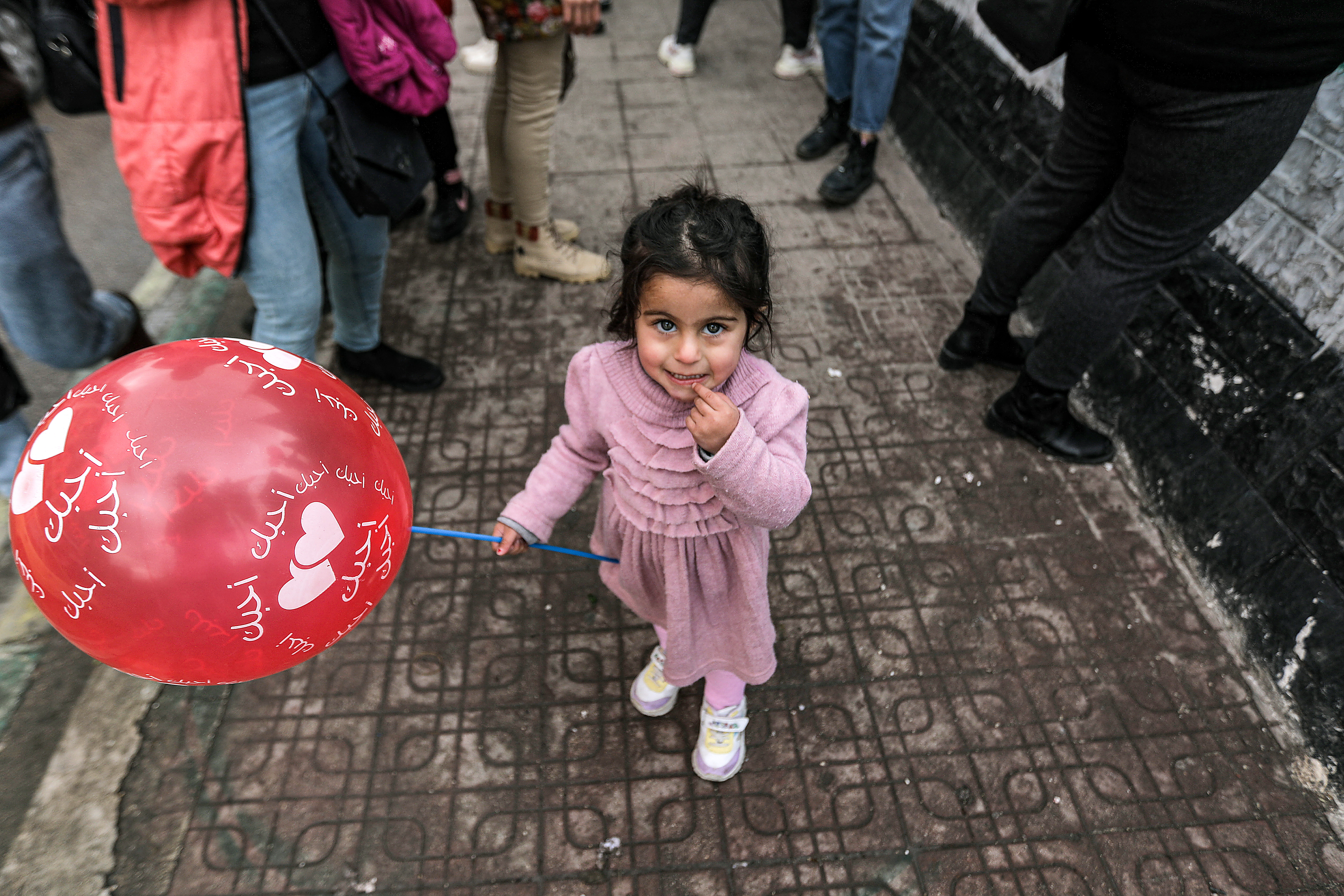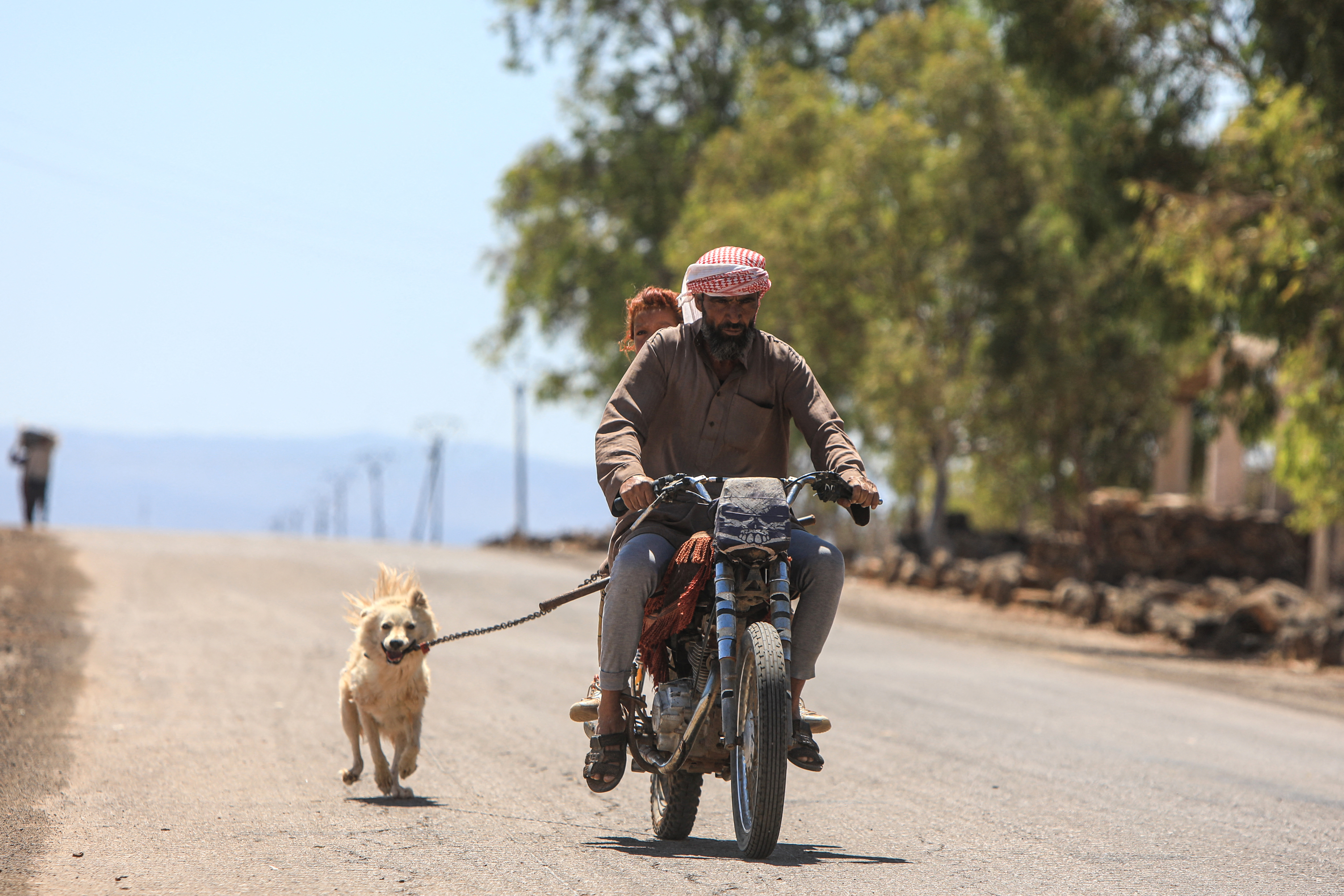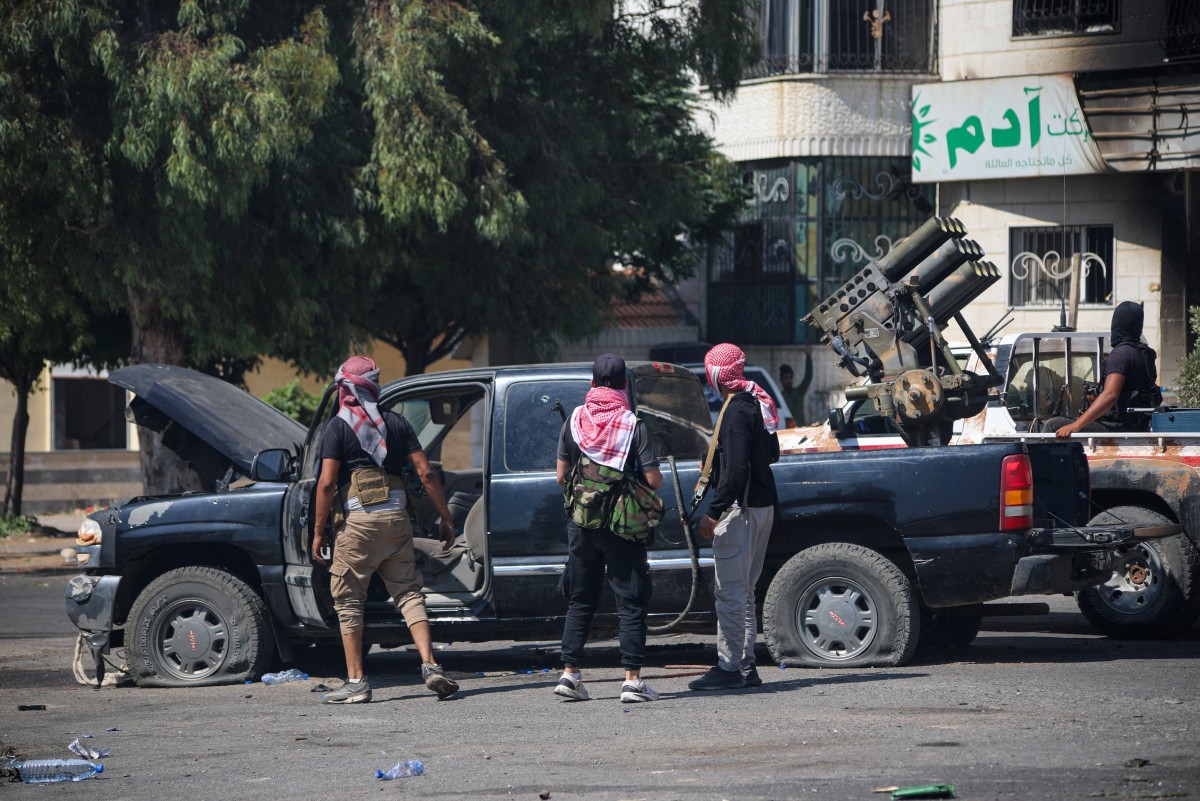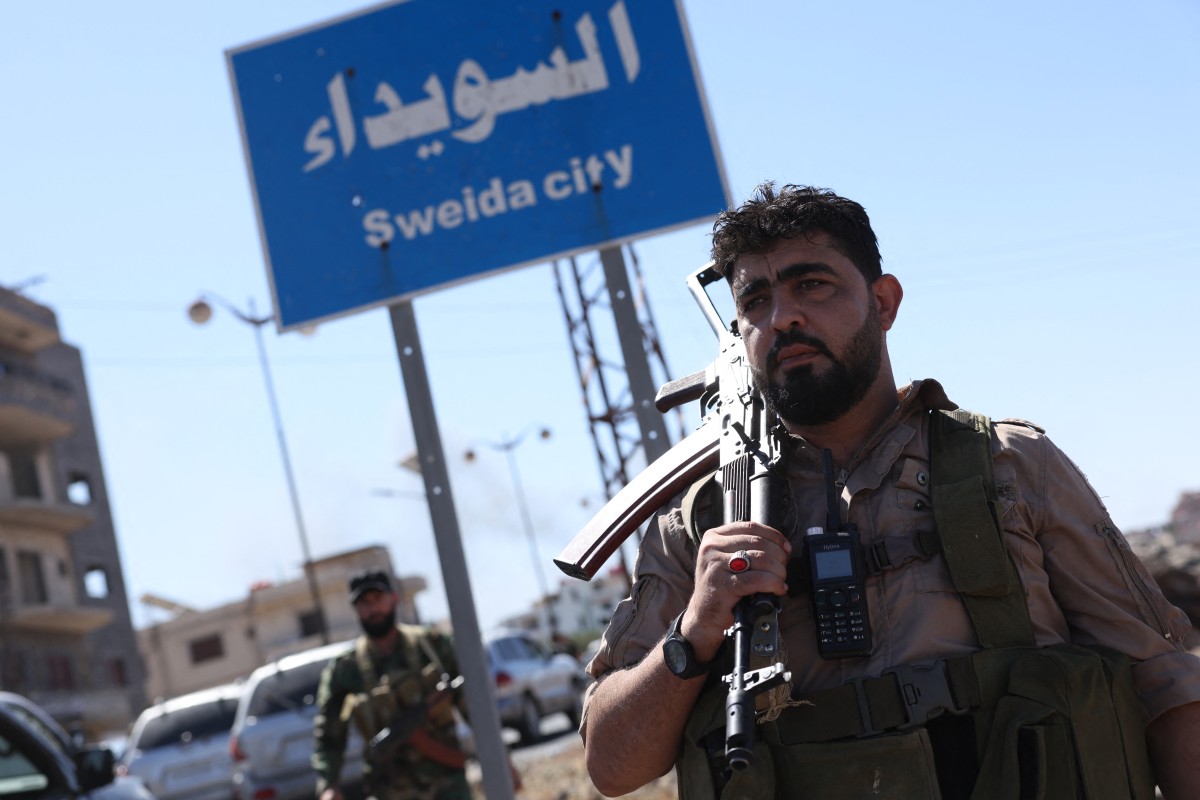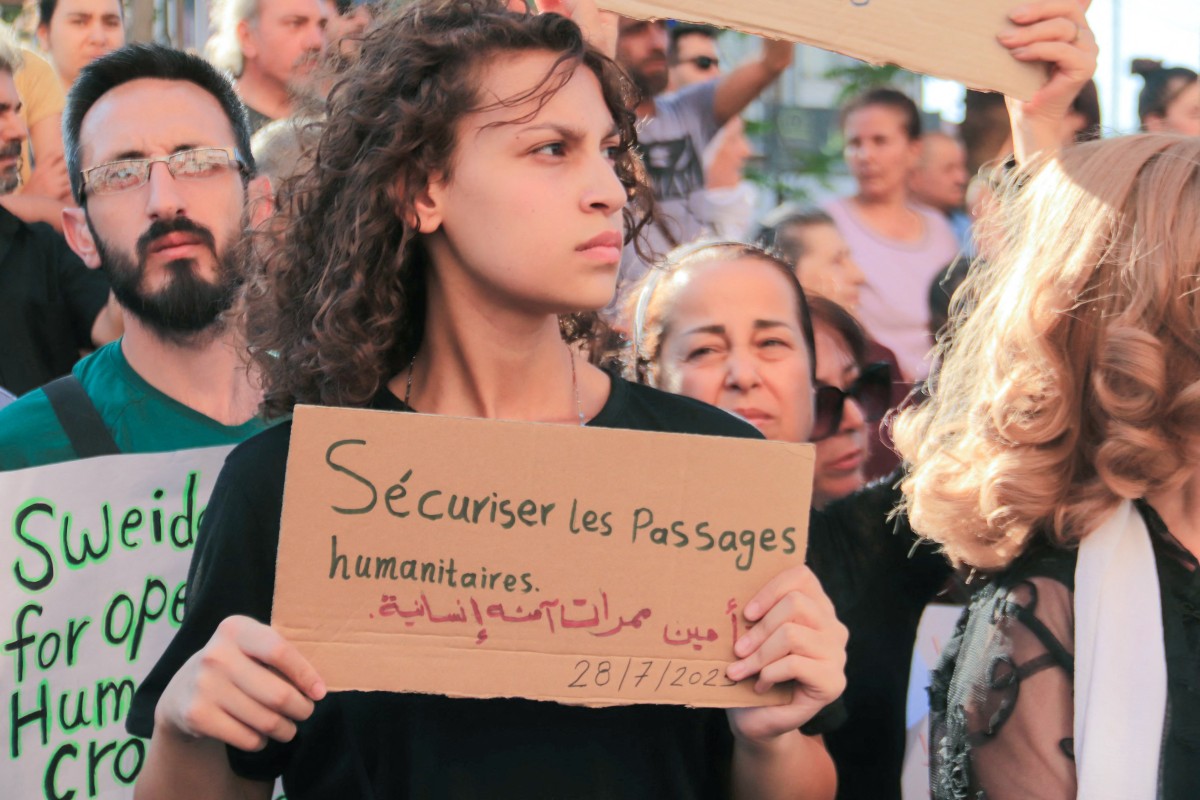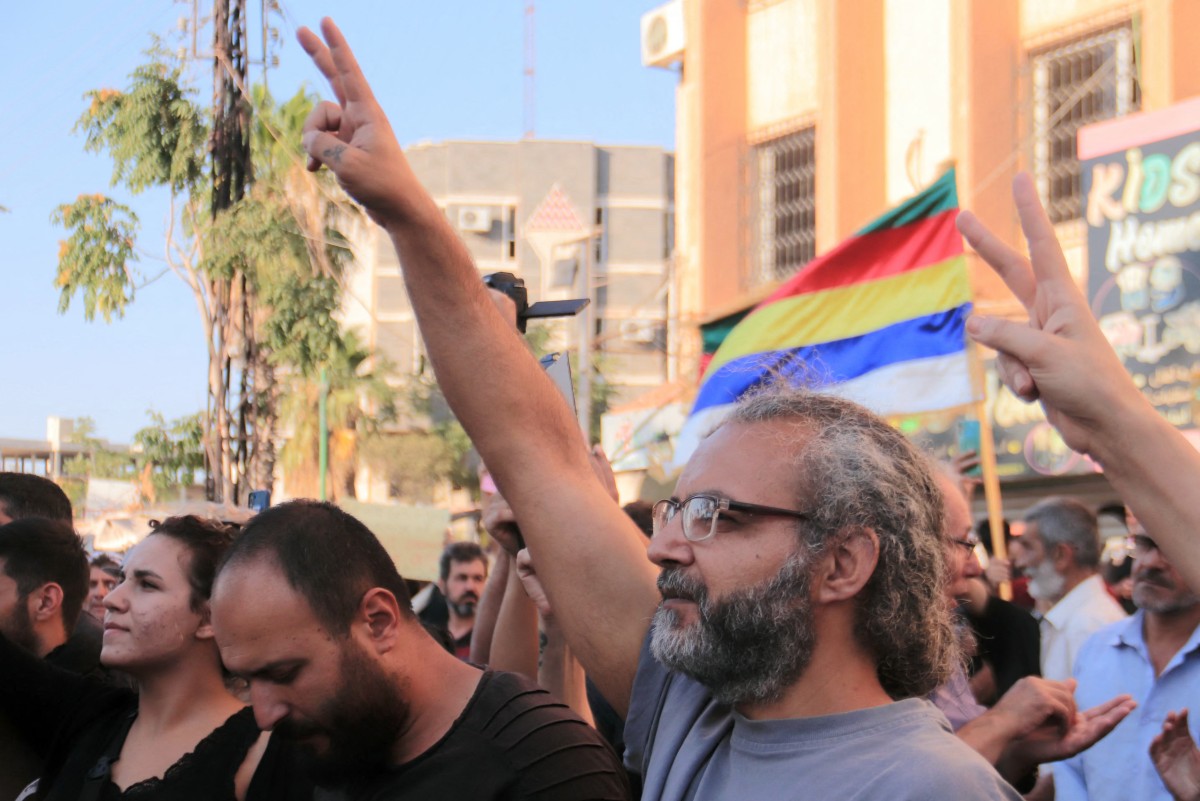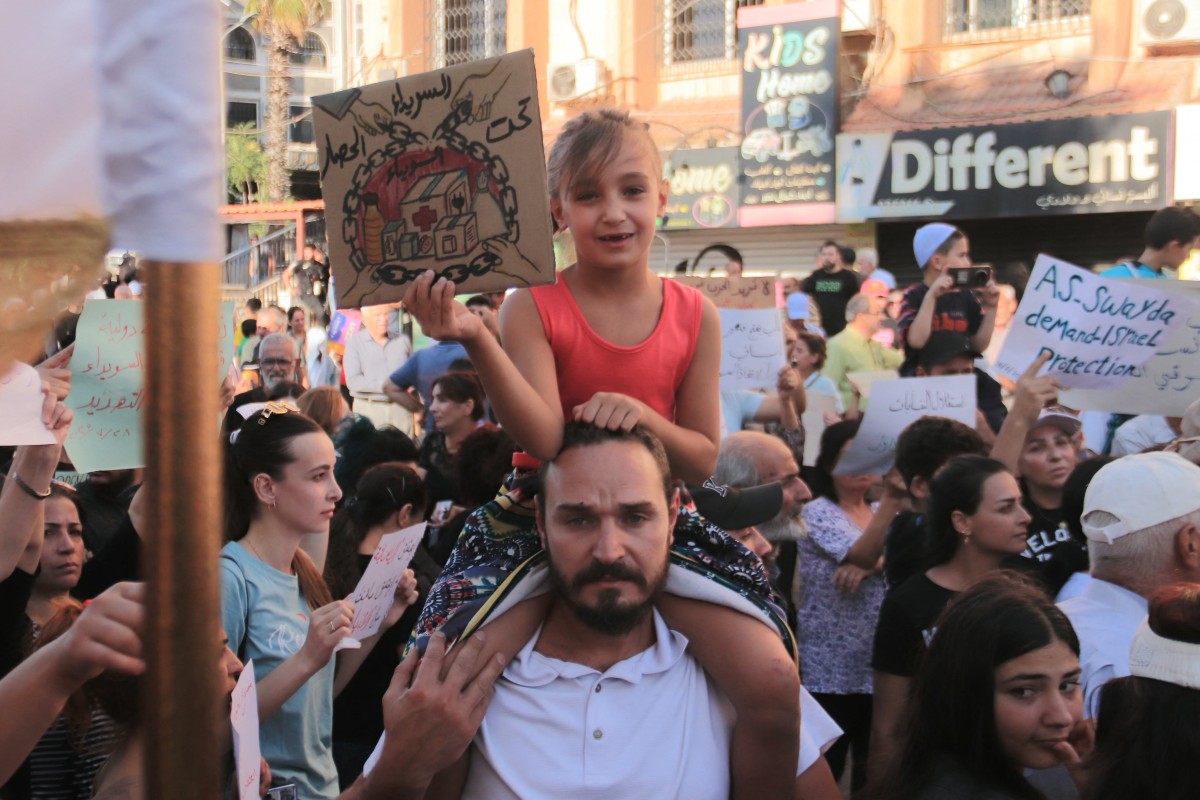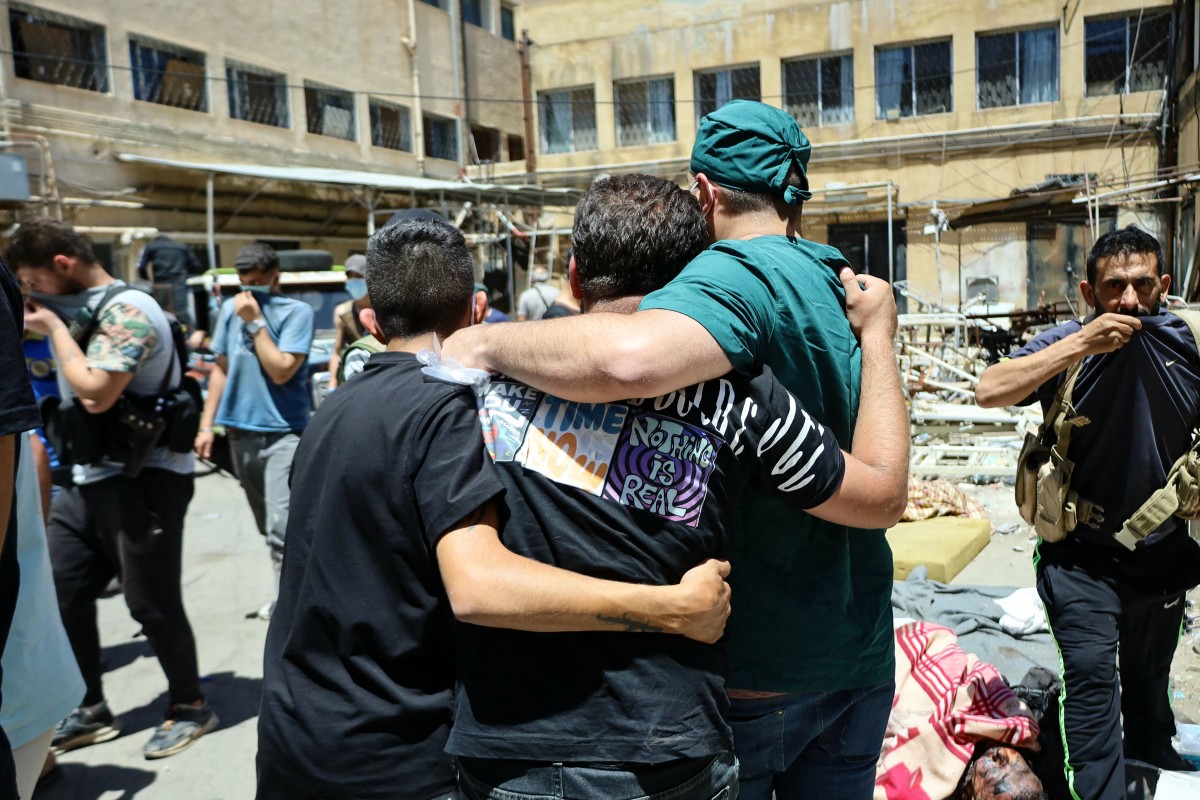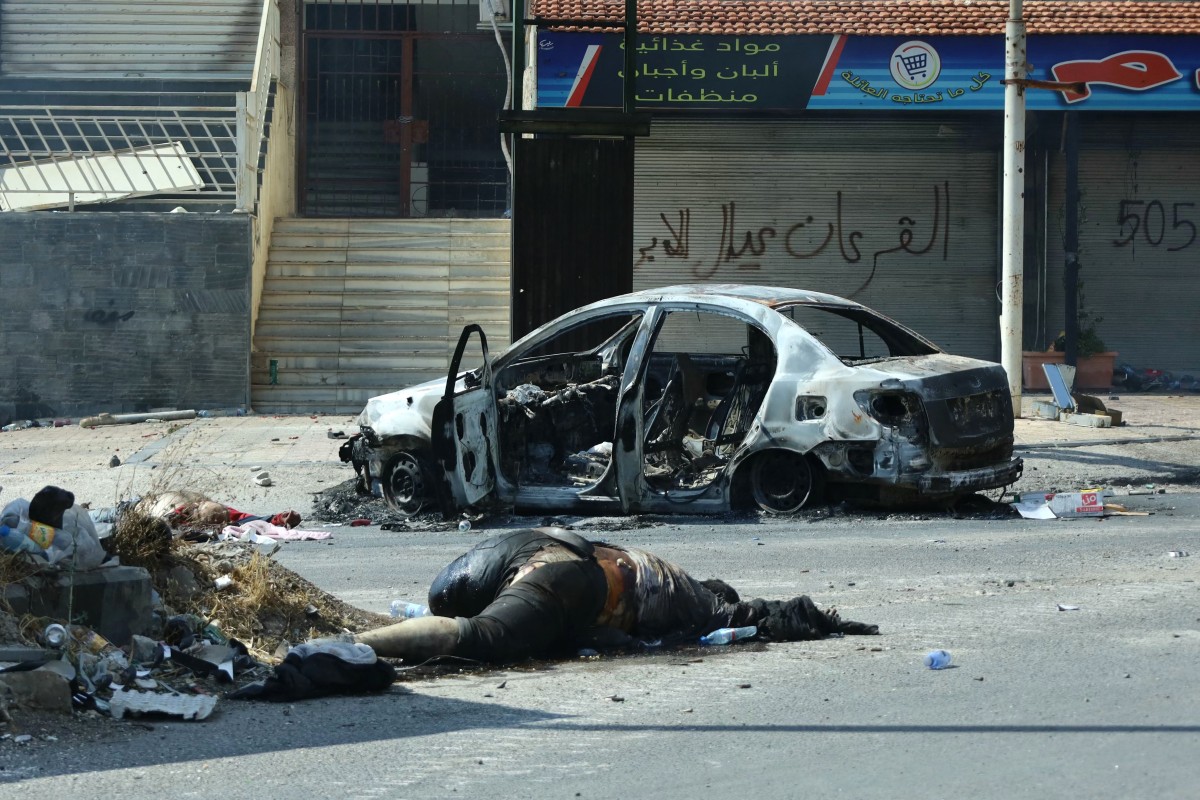The fall of Bashar al-Assad
The fall of Bashar al-Assad in December 2024 radically changed our coverage of Syria. For the first time in years, AFP had free access and relative freedom of movement in this country, where the agency has maintained an office for decades.
Our correspondents, previously based in the Idlib enclave, which had escaped the control of Bashar al-Assad's regime, accompanied rebel forces in their swift offensive on major cities—Aleppo, Hama, Homs, and then Damascus—providing exclusive coverage. In the capital, we were among the first to broadcast images of Damascus in rebel hands and entered the intelligence services' headquarters after Bashar al-Assad fled, as well as the notorious Saydnaya prison.
Our stringers from rebel-held areas in Syria met the journalists from the Damascus bureau—which remained open throughout the civil war—on December 8, and the two teams merged. Special envoys from the Beirut bureau, which oversees Damascus, and reporters from various AFP offices joined them for these historic moments.
People cheer as they gather a the Karama square to welcome the arrival of rebel fighters from Aleppo and Daraa governorates in the southern Syrian city of Sweida on December 10, 2024. The fall of Assad on December 8 has put Syria at a crossroads, after nearly 14 years of civil war sparked by his deadly crackdown on democracy protests. © Shadi Al Dubaisi / AFP
A girl holds a balloon as she stands next to people celebrating in the Karama (Dignity) Square in Syria's southern city of Sweida on December 29, 2024.
© Bakr Alkasem / AFP
AFP's Permanent Presence
Violence in Sweida, a Druze-majority province in southern Syria, began on July 13 with the abduction of a Druze merchant by local Bedouins. However, tensions had been high for weeks, and the intervention of government forces, who claimed to be separating the warring factions, worsened the situation.
Thanks to our on-ground presence, we were able to report on mass atrocities in Sweida perpetrated by government forces, Bedouin fighters, and Druze factions.
Israel, claiming to protect the Druze minority, bombed the Syrian army headquarters in Damascus—where we entered the targeted building—and the presidential palace, aiming to force government troops to withdraw from Sweida.
Authorities then encouraged tribal fighters from various regions of Syria to converge on Sweida, where they entered parts of the city amid intense fighting. Again, we were present on the ground, both alongside tribal forces and the Druze fighters defending the city.
Fighting ceased on July 19 with the announcement of a ceasefire following U.S. intervention.
A Bedouin resident rides a motorbike with a pillion and his attached dog running alongside, as they leave the vicinity of the Druze al-Mazraa village in Syria's southern Sweida governorate on July 17, 2025, amid earlier clashes. The southern Sweida province has been gripped by deadly sectarian bloodshed since July 13, with hundreds reportedly killed in clashes pitting Druze fighters against Sunni Bedouin tribes and the army and its allies. © Bakr Alkasem / AFP
Throughout the battle coverage, we instructed our correspondents to prioritize their safety, emphasizing that nothing is worth a journalist's life. Nevertheless, they were repeatedly exposed to extreme danger. We also faced breakdowns in communication with the province, complicating our work. Our correspondents on the government side had protective equipment, and we provided them the necessary communication tools, but it took until the end of the fighting to send protective gear to our correspondent in the besieged city.
From Damascus and Beirut, we coordinated coverage, oversaw the entire text production, and gained access to eyewitness accounts through which we reported atrocities and the desperate situation at Sweida's sole operating hospital. "It is no longer a hospital; it's a mass grave," a weeping nurse told us over the phone, as our lines were flooded with urgent calls for help. The violence, including summary executions, some documented by AFP, claimed over 2,000 lives, according to a human rights organization. We chose to highlight the testimony of two of our correspondents: Bakr Al-Kasem, who covered the violence from the government and tribal sides, and Shadi al-Dubaisi, who was present in the city of Sweida.
(1) A member of Syria's security forces stands under a sign in the predominantly Druze city of Sweida on July 15, 2025, following clashes between Bedouin tribes and Druze fighters. Syrian government forces entered the majority Druze city of Sweida on July 15, 2025, the interior ministry said, aiming to end clashes with Bedouin tribes that have killed nearly 100 people. © Bakr Alkasem / AFP
(2) Tribal and bedouin fighters deploy in the western neighbourhood of southern Syria's predominantly Druze city of Sweida, amid clashes with Druze gunmen on July 19, 2025. Syrian Bedouins and their allies fought Druze gunmen in the community's Sweida heartland for a seventh day despite a ceasefire ordered by the government following a US-brokered deal to avert further Israeli military intervention. © Abdulaziz Ketaz / AFP
(3) A member of the Syrian security forces looks towards a burning house in the Mazraa area, near Sweida on July 14, 2025, following clashes between Bedouin tribes and local fighters in the predominantly Druze city. At least 89 people were killed in the southern Syrian province of Sweida as clashes between Sunni Bedouin tribes and Druze fighters raged for a second day on July 14, 2025, a monitor said. © Bakr Alkasem / AFP
Perspectives
"My name is Bakr Al-Kasem. I am a photojournalist from Maarrat al-Numan, in the Idlib region (northwest). I have been working for 12 years, including seven and a half years with AFP, with experience directly in the field under harsh conditions.
One of the main challenges in covering the events in Sweida was the lack of reliable internet connections and power sources during continuous coverage.
I relied on the experience I gained covering the war and conflicts in Syria to ensure my safety. First and foremost, I focus on communication, then study the state of the roads and the nature of the region. I try to be accompanied by a trusted member of the local community, I stay in touch with my friends to be informed about the situation on the roads. I share my live location with the agency throughout the trip.
I try not to stay in the same spot for too long when filming, and I retreat to a safer point when finished to send my footage.
The hardest part was witnessing the death of civilians; I felt powerless in front of the victims, especially after seeing sectarian killings."
Despite his precautions, Bakr narrowly escaped gunfire on July 19 when he entered the city of Sweida following tribal fighters.
He found himself caught in the crosshair along with other colleagues as they got out of the car to film. While they scrambled back into the car to escape, three bullets hit the vehicle, but fortunately, neither Bakr nor the other journalists were hurt.
(1) A Syrian carries a placard during protest of the humanitarian situation in the predominantly Druze city of Sweida on July 28, 2025. A new humanitarian aid convoy reached southern Syria's Druze heartland on July 28, official media said, as the United Nations warned the humanitarian situation in Sweida province was critical after deadly violence. Clashes in Druze-majority Sweida province, which began on July 13 and ended with a ceasefire a week later, initially involved Druze fighters and Sunni Bedouin tribes, who have been at loggerheads for decades. © Shadi Al-Dubaisi / AFP
(2) Syrians gather to protest the humanitarian situation in the predominantly Druze city of Sweida on July 28, 2025. A new humanitarian aid convoy reached southern Syria's Druze heartland on July 28, official media said, as the United Nations warned the humanitarian situation in Sweida province was critical after deadly violence. Clashes in Druze-majority Sweida province, which began on July 13 and ended with a ceasefire a week later, initially involved Druze fighters and Sunni Bedouin tribes, who have been at loggerheads for decades. © Shadi Al-Dubaisi / AFP
(3) A Syrian girl carries a placard during protest of the humanitarian situation in the predominantly Druze city of Sweida on July 28, 2025. A new humanitarian aid convoy reached southern Syria's Druze heartland on July 28, official media said, as the United Nations warned the humanitarian situation in Sweida province was critical after deadly violence. Clashes in Druze-majority Sweida province, which began on July 13 and ended with a ceasefire a week later, initially involved Druze fighters and Sunni Bedouin tribes, who have been at loggerheads for decades. © Shadi Al-Dubaisi / AFP
"My name is Shadi al-Dubaisi; I am originally from Sweida, I have been a journalist since 2017, and I have been working with AFP for about two years.
From day one, my priority has been journalistic coverage. I went to the city center under heavy gunfire and shelling. I was targeted by a sniper while taking images, as evidenced by a video I sent.
When government forces and their allies entered the city, one couldn’t even venture onto the streets due to the atrocities and massacres of civilians. A curfew was imposed, and the internet and electricity were cut off.
At one point, I took refuge with two friends in a commercial building in the city center. Armed men arrived; we could hear them. I called the head of the Damascus bureau and told him: "If I die, here are my parents' phone numbers."
(1) EDITORS NOTE: Graphic content / A health worker and other men walk amid the bodies of victims of the recent clashes between local Druze fighters and Bedouin tribes, laid out for identification in the yard of a hospital in Syria's southern city of Sweida on July 17, 2025. In the devastated Druze-majority city of Sweida, residents were shocked by the bodies littering the streets next to looted shops and burned homes following the withdrawal of Syrian government forces. © Shadi Al-Dubaisi / AFP
(2) EDITORS NOTE: Graphic content / Bodies of people killed during sectarian violence the previous week lie in a street in the predominantly Druze city of Sweida in southern Syria on July 20, 2025. Syria's Druze heartland saw a shaky calm on July 20 after a week of violence in Sweida province that killed more than 1,000 people, the latest sectarian bloodshed since Islamists ousted longtime ruler Bashar al-Assad. © Shadi Al-Dubaisi / AFP
The main challenge of the coverage was the lack of fuel, no means of transportation, and I had to do everything on foot, walking long distances, for example between the hospital and the streets where the clashes occurred.
In every street, every house, there were civilians killed, summary executions, and I didn’t know where to start.
Seeing my city bombarded like this deeply affected me. I saw dozens of bodies lying in the streets after the fighting ended. In one car, there was a family of civilians killed while attempting to escape. The father had covered his son's eyes, who was about five years old, so that he wouldn’t see the violence.
At the government hospital, there were hundreds of bodies; the morgue was overwhelmed, and corpses littered the hospital’s surroundings. People came to look for their loved ones. The smell of corpses was everywhere in the city and lingered with us long afterward."
Explore our coverage. Get an AFP News free trial.


